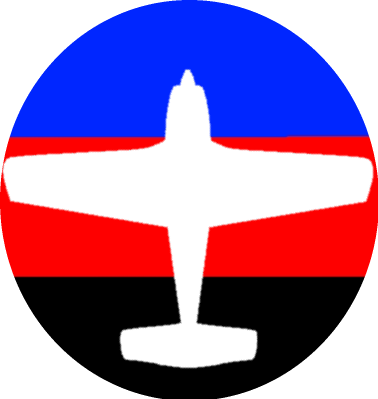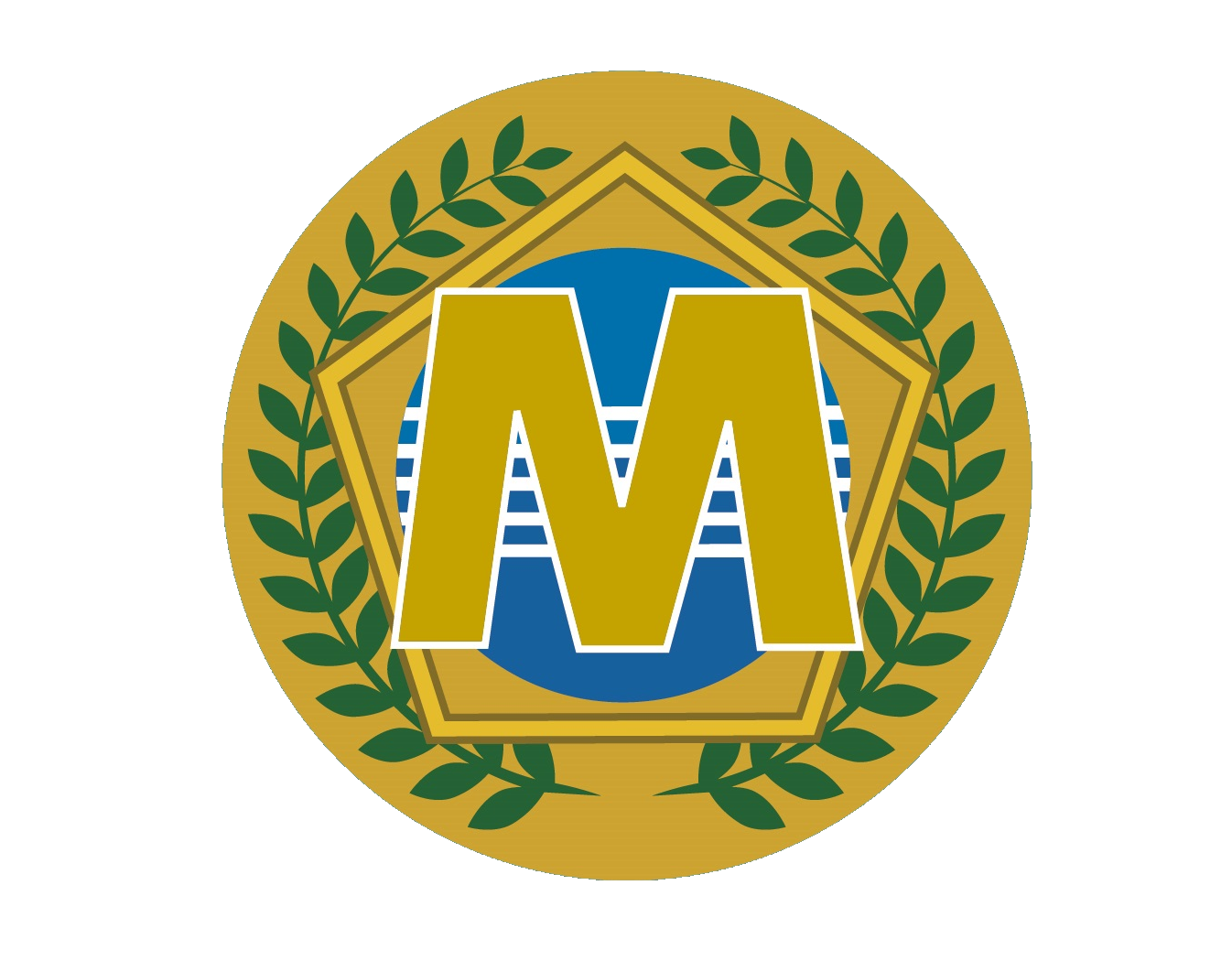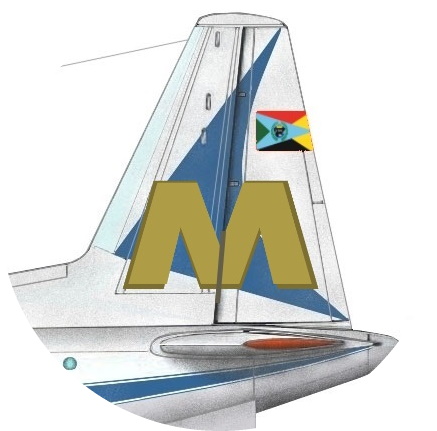1946 till present day
Airforce Markings
Airforce Markings
There are three distinct type of markings which identify an airplane belonging to the Newlands Airforce (NLAF): the roundel, the golden M on the tail, and the unit code (unit number).
The roundel
The early roundel was a circle horizontally divided into three surfaces, blue, red, and black, superimposed by a white silhouette of a propeller airplane seen from above. Although more complicated than in many other air forces, this insignia was well beloved and had its merit in high visibility and recognizability. By 1960, although officially superseded by the “wreathed M roundel”, the tricolor remained in use on some aircraft, persisting until the beginning of the Libyan Wars.
The wreathed M roundel was in use since 1960 and is still the dominant insignia on all Newlands Airforce aircraft. During the Libyan wars a black and white low visibility version started being used, though it never became the prevalent type of the national insignia. Another variation was introduced, too. It was called the “Imperial MANATO roundel” and consisted of the wreathed roundel superimposed over a golden ovoid. After 2010, a redesigned wreathed roundel on a solid golden circle became the standard insignia for all MANATO aircraft.
The golden M
Immediately after the establishments of Newlands, some gold deposits were discovered in its mountains. This discovery led to the Newlands Archipelago’s early-years nick, “The Golden Archipelago”. Since both Latin and Cyrillic alphabets use the same symbol for the letter “M”, the earliest insignia signifying a flying machine belonging to MANATO was, logically, a simple golden capital letter M painted on its tail. These Ms weren’t standardized, and their shape tended to differ from airplane to airplane. An exemption to the rule were Beech 18s, delivered with their whole tails painted in gold.
When the French delivered the first MANATO Moran Saulnier MS760 Paris jet trainer, they refined this design by contouring the M to its tail. The MANATO decisionmakers liked this change, making that type of insignia standard ever since. During the Libyan wars, in the rush to get the new MiG-21 fighters into service, some of them went into combat without their golden Ms. This was a rare occurrence as it often led to these planes being misidentified as enemy aircraft. Some helicopters didn’t posses sufficient tail surface to accept an “M” logo of any kind. The most prominent examples of such were Mil-1s and 2s, the earliest Newlands helicopters. NLAF aircraft participating in the United Nations missions abroad, albeit by the Newlands Constitution restricted only to logistics, usually don’t keep their golden tail Ms, rather embracing the standard UN all-white livery.
The unit codes
This has consistently been the least standardized of all Newlands Airforce insignia. In the beginning, the fuselage codes, painted around the roundel near the tail, resembled British and American ones, combining letters and numbers. As MiG-21s became the most numerous fighters of the Airforce, they retained their Soviet-style nose numbers. After the wars ended, this type of marking became standard throughout the whole force.
Types of camouflage
As for camouflage, even its presence or absence, no patterns were strictly adhered to during the history of NLAF. About half of all flying machines were overall military light grey or the metallic color of the unpainted metal, while the other half sported all types of camouflage imaginable. Even within a single type of aircraft, such as MiG-21, there were bare metal and camouflaged units. This goes equally for the peacetime and the decade of wars. At the beginning of the conflict, most military airplanes were painted in outlandish, non-camouflage schemes. Swift development of the conflict left no time to change that fact and many of these airplanes went into battle in those non-military, easy-to-spot colors. By the beginning of the 2nd Libyan War, as NLAF tried to prevent additional heavy loses in its equipment and pilots, camouflage started to reign supreme. However, a few years later, when it was apparent that Newlands managed to assemble a crushing advantage in the air, bare metal “silver” planes returned, starting to outnumber the camouflaged ones, as their pilots preferred to be more easily spotted to entice the scarce, reticent enemy into dogfights. In the twenty-first century many of the newest designs come in surprising and striking color schemes; thus, the Rudiuses always appear in their silver-white-yellow-black coats of paint.
Other considerations
It is important to note that many services of MANATO uses the flying machines, not only the Airforce. Airplanes and helicopters belonging to Newlands Navy and Newlands Army fully conform to the NLAF’s use of military insignia. The paramilitary branches of the service, Coastguard, Firefighters, and Police, however, do not. Most commonly their aircraft are missing the golden tail M, the wreathed roundel is used on some of them, while the unit numbers tend to differ from those used by MANATO’s core services.
*Note: The time-period referred to is highlighted in the category of each document in this section





